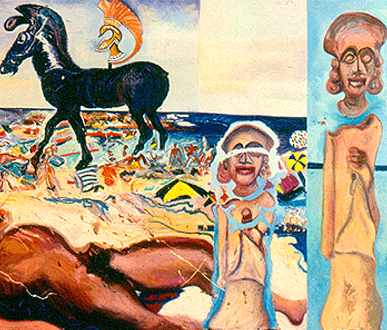AS PRESSURE mounts from cultural organisations all over the world, it can only be a matter of time before the IOC designates art an official Olympic sport. The existing situation is patently unfair: while synchronised swimmers, gymnasts and other 'creative' athletes have dazzled television audiences throughout the globe, painters and sculptors have languished in the shadows. It's tragic, when you think what the public is missing. Imagine David Coleman on Hockney: 'David's going for his famous water effect here . . . I think he may be losing control of the brush . . .yes, I'm afraid that's just too big a splash, he'll be marked down for that.' The Olympic flame could only burn brighter for it.
Britain leads the world in the development of art as a competitive sport. Today, the winners of two major prizes will be announced: the pounds 10,000 Barclays award for postgraduate painters and the pounds 25,000 Athena Art Award for more seasoned campaigners. In addition we have the John Player Portrait Awards, the John Moores Prize and, of course, the national art championships - named after British art's original Olympian - the Turner Prize. Everywhere you look, you find signs of an increasingly competitive edge to the British art world. Only last week, the Whitechapel Open awarded prizes for the first time in its history.
I have just served on two judging panels, for the Whitechapel Open and the Barclays award. The experience confirmed that existing marking systems are in urgent need of revision. How do you distinguish between an Abstract Expressionist and a Neo-Conceptualist, or - say - between a Socialist Realist and a Situationist? Do you simply give marks for Technical Merit and Artistic Impression, or does the subject demand a more intricate response?
As I and the other judges entered...


